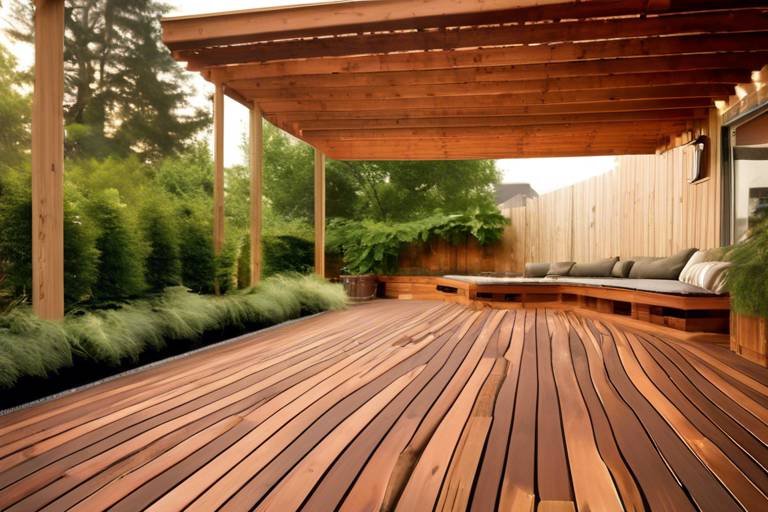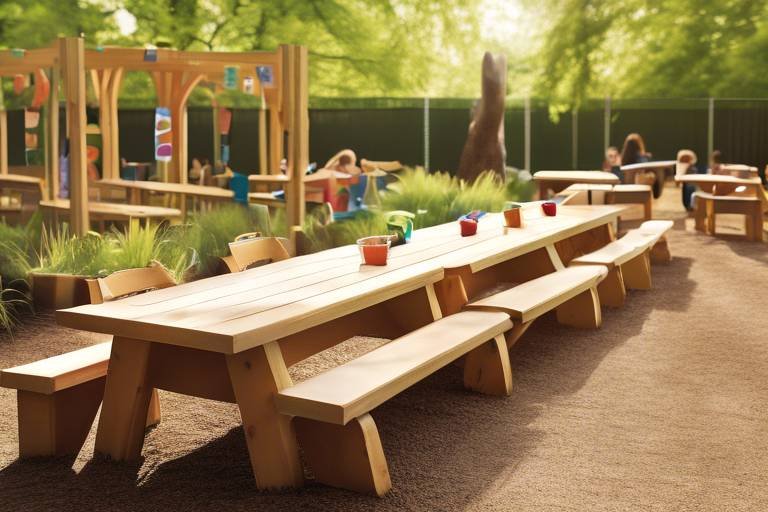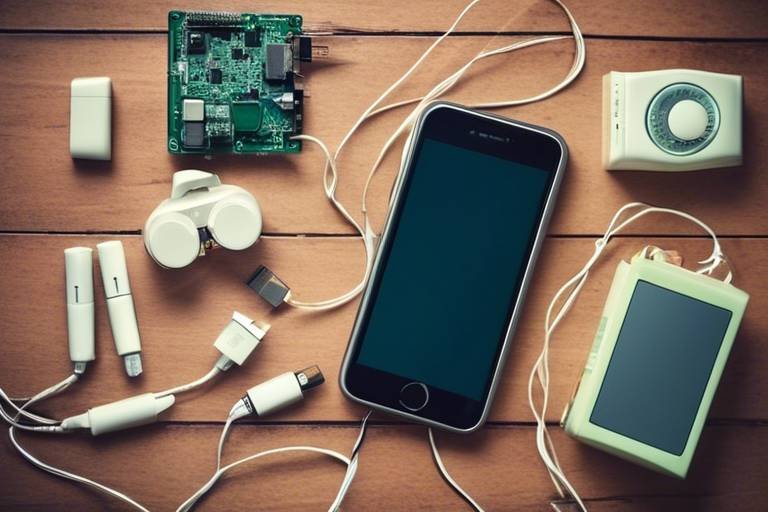10 Sustainable Home Improvement Ideas
Are you looking to make your home more sustainable while reducing your carbon footprint? Here are 10 eco-friendly home improvement ideas that can help you create a greener living space:
1. Solar Panel Installation: By harnessing the power of the sun, you can generate electricity for your home and reduce reliance on non-renewable energy sources. Not only does this lower utility bills, but it also increases the value of your property.
2. Energy-Efficient Appliances: Upgrading to appliances with the ENERGY STAR label can significantly reduce electricity consumption. From refrigerators to dishwashers, these energy-efficient options not only save you money but also benefit the environment.
3. Water-Saving Fixtures: Installing low-flow toilets, showerheads, and faucets can help minimize water wastage in your home. These fixtures are not only cost-effective but also contribute to the conservation of water resources.
4. Insulation Improvements: Enhancing the insulation in your home can improve energy efficiency by preventing heat loss in winter and maintaining cool air in summer. This simple upgrade makes your home more comfortable while reducing energy consumption.
5. LED Lighting: Switching to energy-efficient LED lights can lower electricity usage and extend the lifespan of your lighting fixtures. With various colors and styles available, LED bulbs are a sustainable choice for your home.
6. Composting System: Setting up a composting system in your backyard allows you to recycle organic waste into nutrient-rich soil for gardening. This practice reduces landfill waste, lowers greenhouse gas emissions, and promotes sustainable living.
7. Green Roof Installation: Creating a green roof by planting vegetation on top of your home offers insulation benefits, reduces stormwater runoff, and provides a habitat for wildlife. Green roofs not only enhance energy efficiency but also contribute to urban biodiversity.
8. Recycled Materials Usage: Opting for building materials made from recycled content, such as reclaimed wood or recycled glass countertops, helps conserve natural resources and reduces waste sent to landfills. Using recycled materials in home improvement projects is both eco-friendly and stylish.
9. Smart Home Technology Integration: Incorporating smart devices like programmable thermostats and energy monitoring tools can optimize energy usage and enhance convenience. With smart technology, you can efficiently control your home's energy consumption while embracing sustainable practices.
10. Water Harvesting System: Implementing a water harvesting system can help you collect rainwater for various household uses, reducing dependency on municipal water sources. This sustainable practice not only conserves water but also lowers your utility bills.
These sustainable home improvement ideas offer practical ways to enhance your living space while prioritizing environmental conservation and energy efficiency. By incorporating these eco-friendly solutions into your home, you can create a more sustainable and comfortable living environment for yourself and future generations.

Solar Panel Installation
Thinking about making your home more sustainable? One of the best ways to do so is by installing solar panels. By harnessing the power of the sun, you can generate clean electricity for your home while reducing your reliance on non-renewable energy sources. Not only does this help lower your utility bills, but it also contributes to a greener environment.
When it comes to , it's essential to consider the long-term benefits. While the initial investment may seem significant, solar panels are a sustainable choice that can increase the value of your property in the future. Plus, you'll be generating your electricity, which means more independence from traditional energy providers.
One of the key advantages of solar energy is its renewable nature. Unlike fossil fuels, the sun's energy is an abundant resource that won't run out anytime soon. By investing in solar panels, you're not only saving money but also contributing to a cleaner and more sustainable future for generations to come.

Energy-Efficient Appliances
When it comes to making your home more sustainable, one of the key areas to focus on is upgrading to . By replacing old, energy-guzzling devices with modern, eco-friendly alternatives, you not only reduce your electricity consumption but also contribute to a greener environment.
Energy-efficient appliances, such as refrigerators, washing machines, and dishwashers, are designed to operate using less energy without compromising on performance. Look for products that carry the ENERGY STAR label, indicating that they meet strict energy efficiency guidelines set by the Environmental Protection Agency.
These appliances are equipped with advanced technologies that optimize energy usage, resulting in lower electricity bills and reduced environmental impact. By investing in energy-efficient appliances, you not only save money in the long run but also play a part in conserving natural resources and reducing greenhouse gas emissions.

Water-Saving Fixtures
Water-saving fixtures play a crucial role in reducing water consumption and promoting sustainability in your home. By installing low-flow toilets, showerheads, and faucets, you can significantly decrease the amount of water wasted daily. These fixtures are designed to maintain adequate water pressure while using less water, helping you save on your water bills and contribute to environmental conservation.
When selecting water-saving fixtures, look for products that are WaterSense certified. This label ensures that the fixture meets specific criteria for water efficiency without compromising performance. By incorporating these fixtures into your home, you can make a tangible impact on water conservation efforts without sacrificing comfort or functionality.
In addition to reducing water usage, water-saving fixtures also contribute to the overall sustainability of your household. Conserving water helps preserve this precious resource for future generations and minimizes the energy required for water treatment and distribution. By making simple changes to your plumbing fixtures, you can actively participate in water conservation efforts and promote a greener lifestyle.

Insulation Improvements
When it comes to creating a more sustainable and energy-efficient home, play a crucial role in enhancing the overall efficiency of your living space. By focusing on insulation, you can effectively reduce heat loss during the winter months and keep your home cool in the summer without excessive energy consumption.
One of the key benefits of is their ability to lower your energy bills by minimizing the need for constant heating or cooling. By sealing gaps and adding insulation in walls, attics, and floors, you create a barrier that prevents heat transfer, resulting in a more comfortable indoor environment throughout the year.
Moreover, proper contribute to the overall sustainability of your home by reducing your carbon footprint. By using less energy for heating and cooling, you decrease your reliance on fossil fuels, which are major contributors to greenhouse gas emissions.
Investing in not only benefits your wallet and the environment but also enhances the value of your property. Potential buyers are increasingly looking for energy-efficient homes, and a well-insulated house can attract more interest and command a higher price in the real estate market.
When considering , it's essential to assess the current insulation levels in your home and identify areas that need upgrading. Consulting with a professional insulation contractor can help you determine the best solutions for maximizing energy efficiency and comfort in your living space.
By prioritizing as part of your sustainable home improvement strategy, you can enjoy a more eco-friendly lifestyle while reaping the benefits of lower energy costs and increased property value.

LED Lighting
When it comes to sustainable home improvement, one of the most impactful changes you can make is switching to . LED bulbs are not only energy-efficient but also offer a range of benefits that can enhance your living space while reducing your carbon footprint.
By replacing traditional incandescent bulbs with LED lights, you can significantly lower your electricity usage. LED bulbs consume less energy, which translates to lower utility bills and reduced environmental impact. Additionally, LED lights have a longer lifespan compared to traditional bulbs, saving you money on replacements in the long run.
LED lighting also provides versatility in terms of colors and styles, allowing you to customize the ambiance of your home. Whether you prefer warm or cool lighting tones, there is an LED option to suit your preferences. Furthermore, LED bulbs emit less heat than traditional bulbs, making them safer to use and helping to reduce the overall energy consumption of your home.
When considering a home improvement project, investing in LED lighting is a sustainable choice that can enhance both the aesthetic appeal and energy efficiency of your living space. With the wide availability of LED bulbs in the market, transitioning to this eco-friendly lighting option is a simple yet impactful step towards creating a greener home.

Composting System
Creating a composting system in your backyard is not only a sustainable practice but also a rewarding one. By recycling organic waste like food scraps, yard trimmings, and paper products, you can transform them into nutrient-rich soil that benefits your garden and the environment.
Composting is a natural process that decomposes organic matter, turning it into a valuable soil amendment that enriches the soil with essential nutrients for plant growth. It helps reduce the amount of waste sent to landfills, where organic materials break down anaerobically, producing harmful greenhouse gases like methane.
Setting up a composting system is easy and requires minimal effort. You can use a compost bin or create a compost pile in a designated area of your backyard. By layering organic materials with a mix of green (nitrogen-rich) and brown (carbon-rich) ingredients, you create the perfect environment for beneficial microorganisms to break down the materials into compost.
Green materials such as fruit and vegetable scraps, grass clippings, and coffee grounds provide nitrogen, while brown materials like dried leaves, straw, and shredded paper offer carbon. Balancing these components is key to maintaining a healthy compost pile that decomposes efficiently and without odors.
Regularly turning the compost pile aerates it, accelerating the decomposition process and ensuring that all materials break down evenly. Over time, you will notice the transformation of your organic waste into dark, crumbly compost that can be added to your garden soil to improve its structure, fertility, and water retention capacity.

Green Roof Installation
Green Roof Installation involves the innovative practice of planting vegetation on the rooftop of a building, transforming it into a green space that offers numerous benefits beyond traditional roofing systems. This eco-friendly approach not only enhances the aesthetic appeal of your home but also contributes to environmental sustainability in various ways.
By creating a green roof, you can significantly improve the insulation of your home, reducing the heat absorbed by the building during hot weather and minimizing heat loss in colder months. The vegetation acts as a natural barrier, helping to regulate indoor temperatures and reduce the need for excessive heating or cooling, thus lowering energy consumption and utility costs.
Furthermore, green roofs play a crucial role in managing stormwater runoff by absorbing rainwater and reducing the strain on drainage systems. The plants on the roof act as a natural filter, purifying the water that runs off the roof and reducing the risk of flooding in urban areas. This sustainable practice helps to mitigate the impact of heavy rainfall and promotes water conservation.
Additionally, a green roof provides a habitat for various wildlife, including birds, insects, and pollinators, contributing to urban biodiversity and creating a more environmentally friendly ecosystem within your living space. It fosters a connection to nature in urban environments and supports the local ecosystem by providing shelter and food sources for wildlife.
Overall, the installation of a green roof is a proactive step towards sustainable living, aligning with the principles of environmental stewardship and eco-conscious practices. It not only enhances the functionality and efficiency of your home but also demonstrates a commitment to reducing your carbon footprint and promoting a greener future for generations to come.

Recycled Materials Usage
When it comes to sustainable home improvement, incorporating recycled materials into your projects can make a significant impact on the environment. By opting for building materials made from recycled content, you not only reduce the demand for new resources but also divert waste from landfills. Embracing recycled materials in your home renovations is a creative way to contribute to a more eco-friendly lifestyle while adding unique character to your living space.
One popular choice for recycled materials is reclaimed wood, which can be used for flooring, furniture, accent walls, and more. Not only does using reclaimed wood give a rustic and charming look to your home, but it also helps preserve forests by reducing the need for new timber. Additionally, recycled glass countertops offer a sleek and modern aesthetic while diverting glass bottles and jars from ending up in landfills.
For roofing projects, considering recycled metal roofing can be a durable and sustainable option. Metal roofs made from recycled materials are not only long-lasting and energy-efficient but also contribute to reducing the environmental impact of traditional roofing materials. By choosing recycled metal roofing, you are investing in a greener future for your home.
Integrating recycled materials into your home improvement endeavors is a creative way to showcase your commitment to sustainability. Whether it's through using reclaimed wood for a DIY project or installing recycled glass countertops in your kitchen, each choice towards recycled materials brings us closer to a more environmentally conscious way of living.

Smart Home Technology Integration
Smart Home Technology Integration is revolutionizing the way we interact with our living spaces. By incorporating smart devices like programmable thermostats, smart lighting systems, and energy monitoring tools, homeowners can optimize energy usage and enhance convenience in their daily lives. These innovative technologies allow for greater control over energy consumption, making it easier to manage and reduce overall usage.
Imagine being able to adjust the temperature of your home from anywhere using your smartphone or having lights that automatically dim when you leave a room. Smart home technology not only provides comfort and convenience but also contributes to a more sustainable lifestyle by promoting energy efficiency.
One of the key benefits of smart home technology is the ability to create a connected ecosystem within your home. By integrating various devices and systems, you can monitor and control energy usage more effectively. For example, a smart thermostat can learn your schedule and adjust the temperature accordingly, leading to significant energy savings over time.
Furthermore, smart home technology offers real-time insights into your energy consumption patterns, allowing you to identify areas where you can make improvements. With the help of energy monitoring tools, you can track your usage and receive recommendations for optimization, empowering you to make informed decisions about your energy consumption.
Frequently Asked Questions
- What are the benefits of installing solar panels?
Installing solar panels allows you to harness renewable energy from the sun, reducing your reliance on non-renewable energy sources. This not only helps lower your utility bills but also decreases your carbon footprint, contributing to a more sustainable environment.
- How can energy-efficient appliances help in reducing electricity consumption?
Energy-efficient appliances are designed to use less electricity while still providing the same level of functionality. By upgrading to these appliances, you can significantly decrease your energy consumption, leading to cost savings and environmental benefits.
- What is the importance of proper insulation in a home?
Proper insulation plays a crucial role in maintaining a comfortable indoor temperature by preventing heat loss during winter and keeping cool air inside during summer. This not only enhances your living experience but also reduces the need for excessive heating or cooling, resulting in energy savings.
- How does composting at home contribute to sustainability?
Composting at home helps reduce the amount of organic waste sent to landfills, where it would otherwise decompose and release harmful greenhouse gases. By recycling organic waste into nutrient-rich soil, you can promote sustainable practices, reduce waste, and improve soil health in your garden.
- What are the advantages of using recycled materials in home improvement projects?
Using recycled materials in home improvement projects not only conserves natural resources but also reduces the amount of waste sent to landfills. By opting for materials made from recycled content, you contribute to a circular economy and support sustainable practices in the construction industry.



















